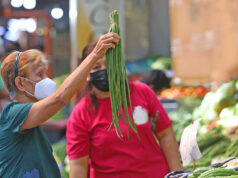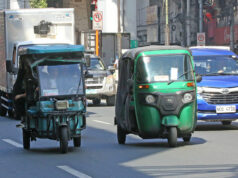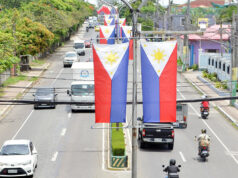Potential Effects of RA 11203 (Philippine Rice Tariffication)
By Caesar B. Cororaton, Krista Danielle S. Yu and Marites M. Tiongco
School of Economics, De La Salle University
AFTER 24 YEARS since the Philippines was granted approval in 1995 by the World Trade Organization (WTO) to impose quantitative restriction (QR) on rice importation into the country, the government finally eliminated the quota system on rice importation through the passage of RA 11203. The law, which was recently signed, will be implemented on March 5, 2019. One of the key features of RA 11203 is the replacement of the rice importation quota system with tariffs. In the new law, the following tariffs apply:
(i) 35% if rice was imported from within ASEAN
(ii) 40% if within the minimum access volume (MAV) of 350,000 metric tons for imports coming from countries outside of ASEAN
(iii) 180% if above the MAV and from a non-ASEAN country.
The Philippine government expects to generate additional tariff revenue of P10 billion as a result of the tariffication of the rice quota. This amount is expected to be allocated to assist rice farmers who will be negatively affected by the expected increase in the inflow of cheaper rice imports of similar quality (Class C or 25% broken) into the country.
The objective of this short note is to present our simulation results of the potential economic impact of RA 11203 on rice farmers, rice imports, consumer prices, Filipino consumers, government tariff revenue, and poverty. The simulation was conducted using a Philippine economic model. We considered two scenarios involving a complete elimination of QR: (i) without tariff replacement on rice imports; and (ii) with rice tariffs in RA 11203. The simulations were compared to the base case where the QR on rice importation is retained.
1. In the case of QR elimination with no tariff replacement, the volume of inflows of cheaper rice will increase by 92.7%, displacing local palay production by 5.9%. The price of local palay will also decline by 2.9%. Overall, the value of local palay production will decrease by P35.1 billion as a result of the drop in both the volume of production and prices. Because there are no tariffs to replace the quota, government revenue will drop by P1.3 billion.
2. If the elimination of the QR is replaced with tariffs stated in RA 11203, the volume of inflows of cheaper rice imports increase at significantly lower rate of 8.1 %. The drop in palay price is also considerably smaller at 0.2%. Overall, the value of local palay production will decline by P2.7 billion. Because of the tariffs imposed on rice imports, government tariff revenue will increase by P18.9 billion, significantly larger than the estimates of the government.
3. In both cases, the elimination of the rice QR will result in lower domestic prices of rice, which in turn leads to higher volume of rice consumption. The value of rice consumption however will decline by P2.1 billion despite the increase in the volume of rice consumption largely because of the decrease in the domestic prices of rice as a result of the tariffication of rice QR.
4. In both cases, the tariffication of the QR will result in lower inflation. The reduction in the overall price is larger in the case of no tariff replacement, mainly because tariffs are additional taxes on consumption. Across decile income groups, however, the decline in consumer prices is higher in lower income groups largely because these groups have relatively higher expenditure share on rice in their consumption basket. Cororaton and Yu (2019) have noted that 20.2% of consumption of poor households is on rice as compared to 10.9% of consumption of non-poor.
5. Both cases are poverty-reducing. The number of poor who will be lifted out of poverty is considerably higher in the first case at 409,956 compared to 38,060 for the second case mainly because of the higher reduction in consumer prices. However, the negative effects on palay farmers are significantly higher in the first case with no tariff replacement compared to the case with tariffs under RA 11203.
The rice QR system which lasted for 24 years generated sizable pure economic rent that went directly to the pockets of select few. It is about time to tariffy the rent and redistribute these to the rice farmers who will be negatively affected by the influx of cheaper imported rice. The higher expected increase in government tariff revenue generated through RA 11203 will be more than enough to assist palay farmers and may be used by the government to increase the assistance to palay farmers through direct income support or through productivity assistance, e.g., the development of improved rice varieties that can withstand and adapt to rapid changes in weather conditions, in addition to the programmes specified under the Rice Competitiveness Enhancement Fund.
All told, the implementation of RA 11203 was a right policy move by the government to correct the distortion created by the rice QR that puts heavy burden on poor.
Caesar B. Cororaton is a Senior Research Fellow at the Global Issues Initiative of the Virginia Polytechnic Institute and State University. He has been working on global economic modeling focusing on regional trade agreements, country-level modeling focusing on policy reforms and poverty, and community-level modeling focusing on impact evaluation of policy interventions.
Krista Danielle S. Yu is an associate professor and research fellow in the School of Economics of De La Salle University. Her research activities centers on the development of quantitative models for disaster risk and vulnerability analyses, as well as on the economic impact of natural disasters. In 2016, she was recognized by Thomson Reuters as the Philippines Promising Star in Economics and Business. In 2017, she received the National Academy of Science and Technology Outstanding Young Scientist Award in the field of Economics.
Marites M. Tiongco is a Full Professor and Dean of the School of Economics at the De La Salle University in Manila, Philippines. Her research work focus on the impact of human and social capital on development and poverty, and on the economics of agricultural development with emphasis on critical natural resources and policy issues as they affect food security, food and water safety along the value chain, market access of smallholder producers, agricultural health and productivity, climate change mitigation and adaptation, and environmental sustainability.



